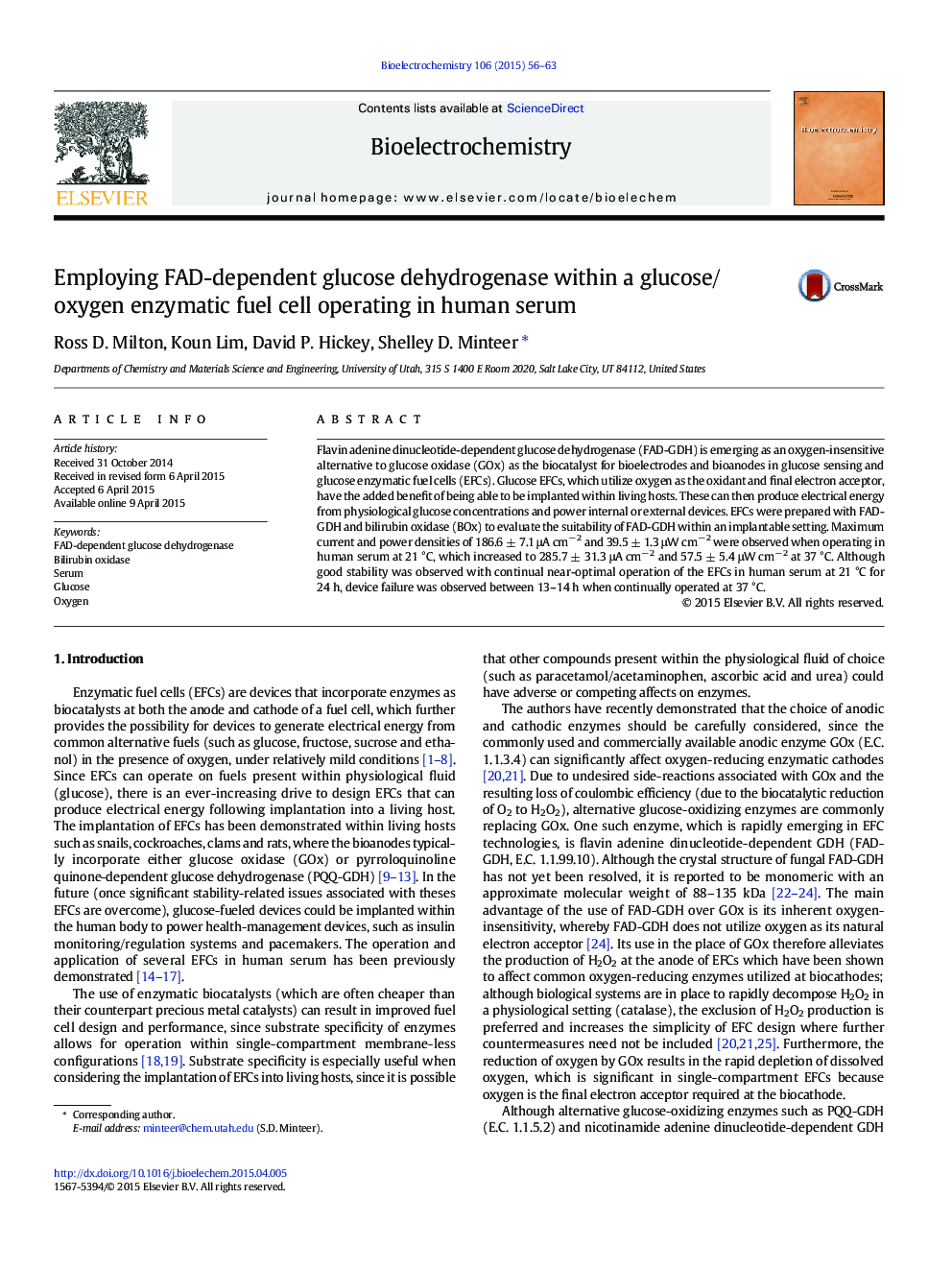| کد مقاله | کد نشریه | سال انتشار | مقاله انگلیسی | نسخه تمام متن |
|---|---|---|---|---|
| 1267861 | 972382 | 2015 | 8 صفحه PDF | دانلود رایگان |

• Maximum current densities of 186.6 ± 7.1 and 285.7 ± 31.3 μA cm− 2 for EFCs at 21 °C and 37 °C.
• Maximum power densities of 39.5 ± 1.3 and 57.5 ± 5.4 μW cm− 2 for EFCs at 21 °C and 37 °C.
• Approximately 40% performance retained over a 24-hour operational window, in human serum.
Flavin adenine dinucleotide-dependent glucose dehydrogenase (FAD-GDH) is emerging as an oxygen-insensitive alternative to glucose oxidase (GOx) as the biocatalyst for bioelectrodes and bioanodes in glucose sensing and glucose enzymatic fuel cells (EFCs). Glucose EFCs, which utilize oxygen as the oxidant and final electron acceptor, have the added benefit of being able to be implanted within living hosts. These can then produce electrical energy from physiological glucose concentrations and power internal or external devices. EFCs were prepared with FAD-GDH and bilirubin oxidase (BOx) to evaluate the suitability of FAD-GDH within an implantable setting. Maximum current and power densities of 186.6 ± 7.1 μA cm− 2 and 39.5 ± 1.3 μW cm− 2 were observed when operating in human serum at 21 °C, which increased to 285.7 ± 31.3 μA cm− 2 and 57.5 ± 5.4 μW cm− 2 at 37 °C. Although good stability was observed with continual near-optimal operation of the EFCs in human serum at 21 °C for 24 h, device failure was observed between 13–14 h when continually operated at 37 °C.
Journal: Bioelectrochemistry - Volume 106, Part A, December 2015, Pages 56–63